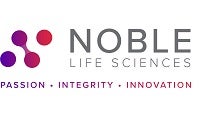
Small animal optical imaging provides oncology researchers with the ability to perform non-invasive longitudinal monitoring of disease progression, detection of metastasis and micrometastasis, and to accurately quantify tumour burden in a wide variety of animal models. This can be used to effectively monitor and quantitate responses to therapeutics and develop translational biomarkers that can be used throughout your drug development program.
The sensitivity, versatility and non-invasive nature of combined luminescent and fluorescent imaging also provides additional capabilities such as longitudinal studies of cell trafficking, gene expression responses in living animals and a multitude of additional non-oncology uses including infectious disease, inflammation, cardiovascular disease, immunology, transplantation biology, and drug metabolism
Speaker:
Dr Stephen Horrigan, Chief Scientific Officer, Noble Life Sciences
Details:
Date: February 10, 2021
Time: 1:00 pm ET
Registration Link: Please click here.

